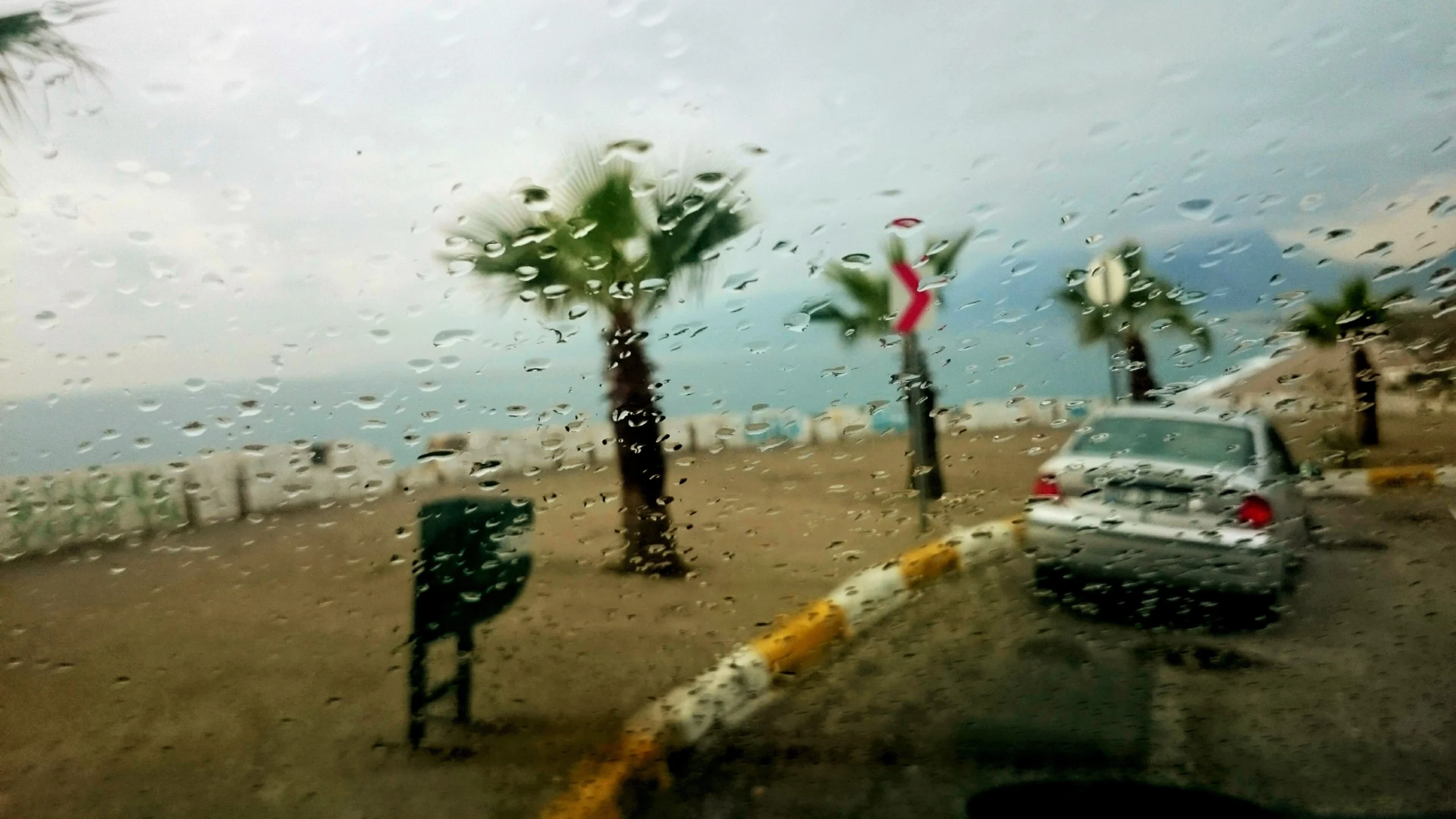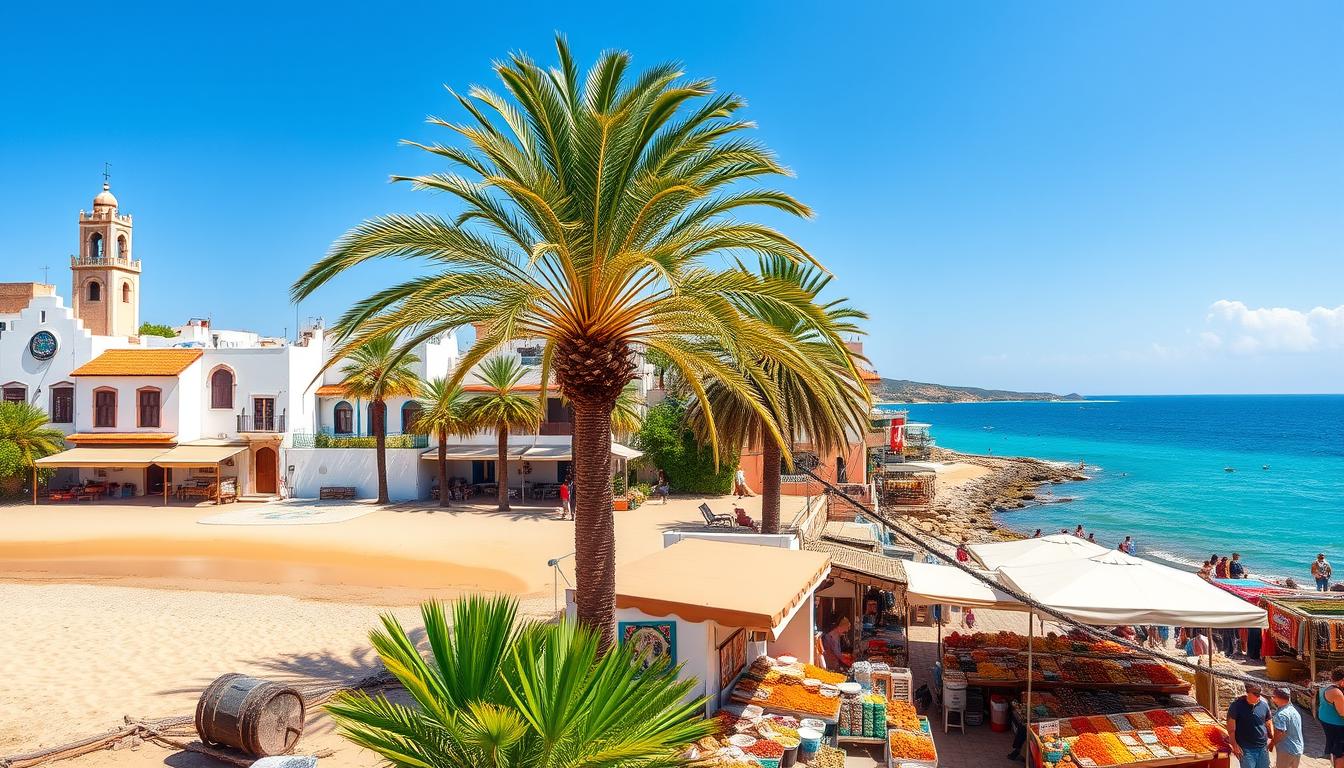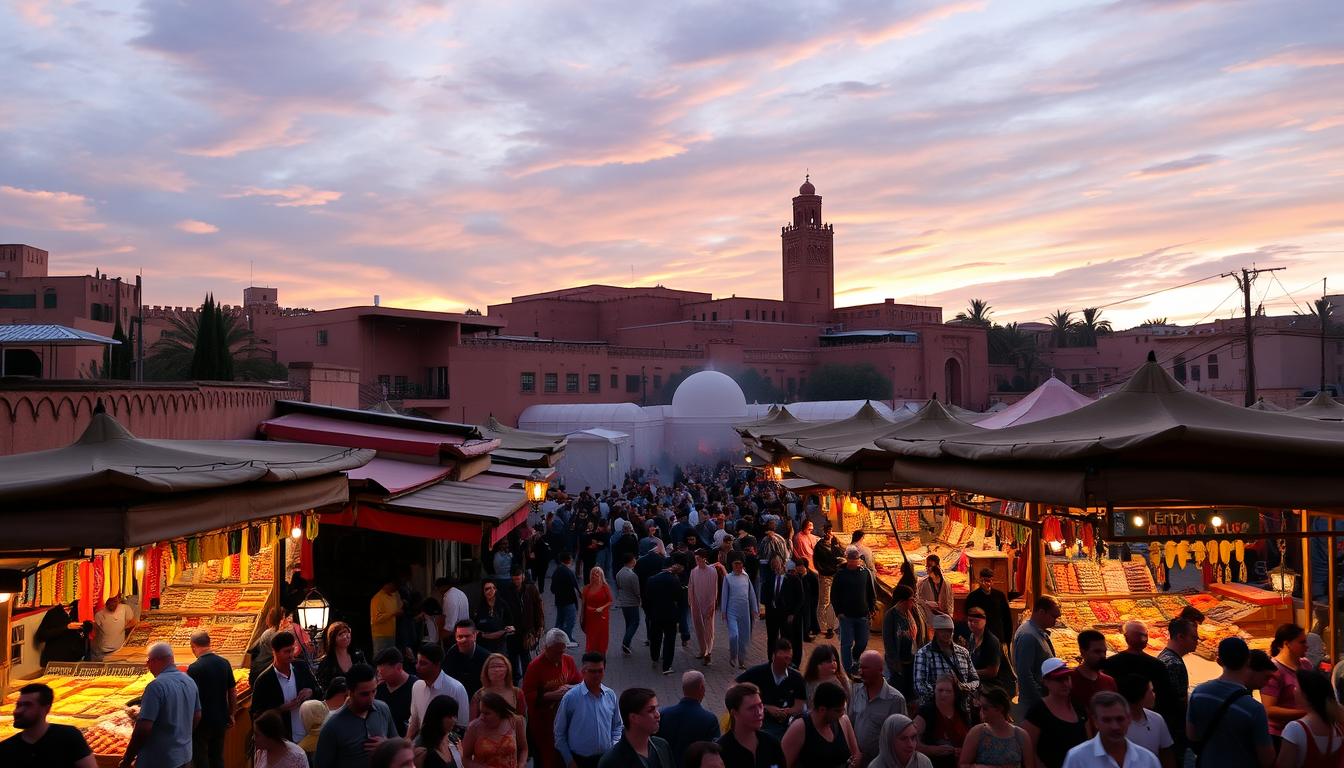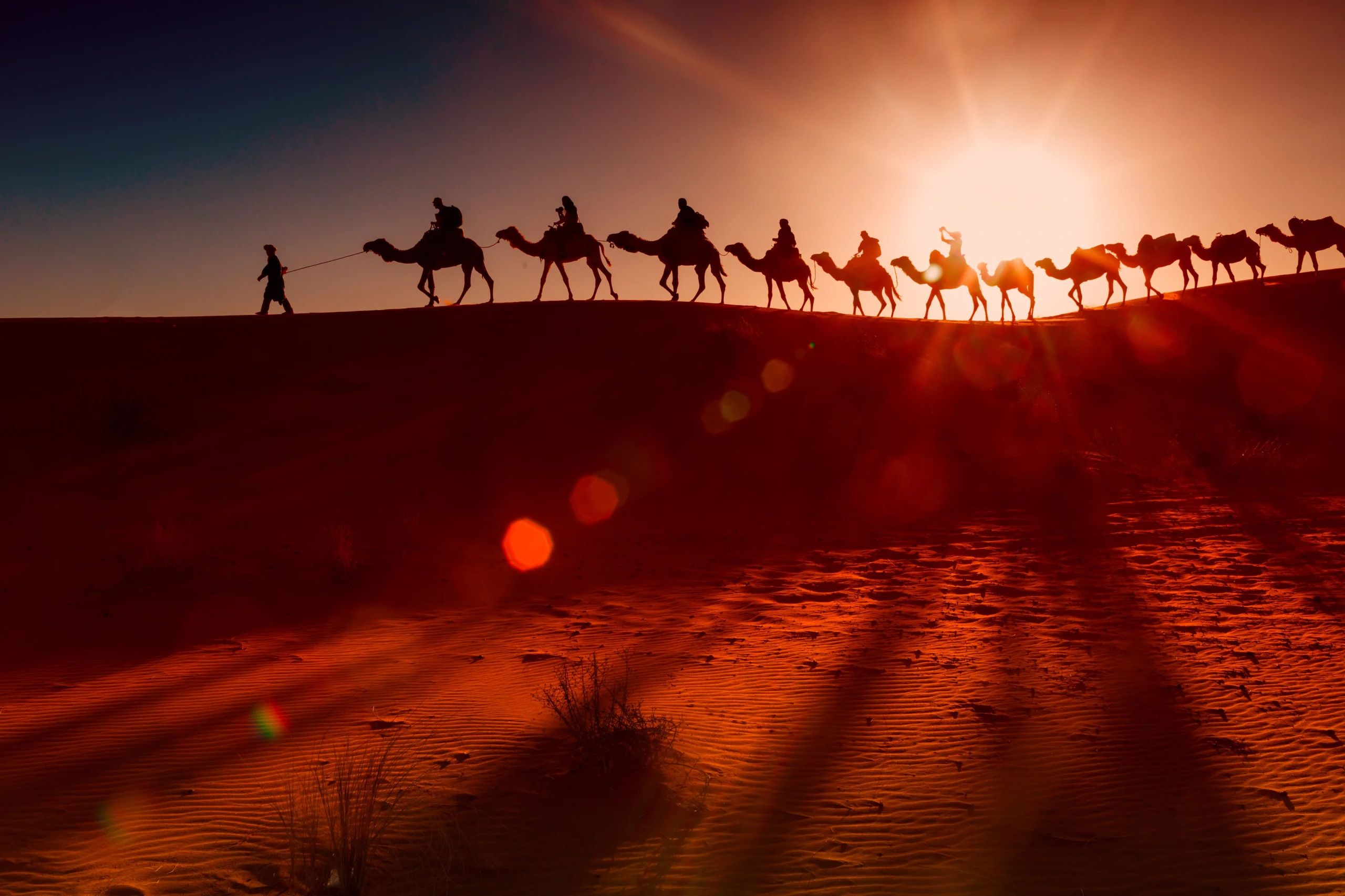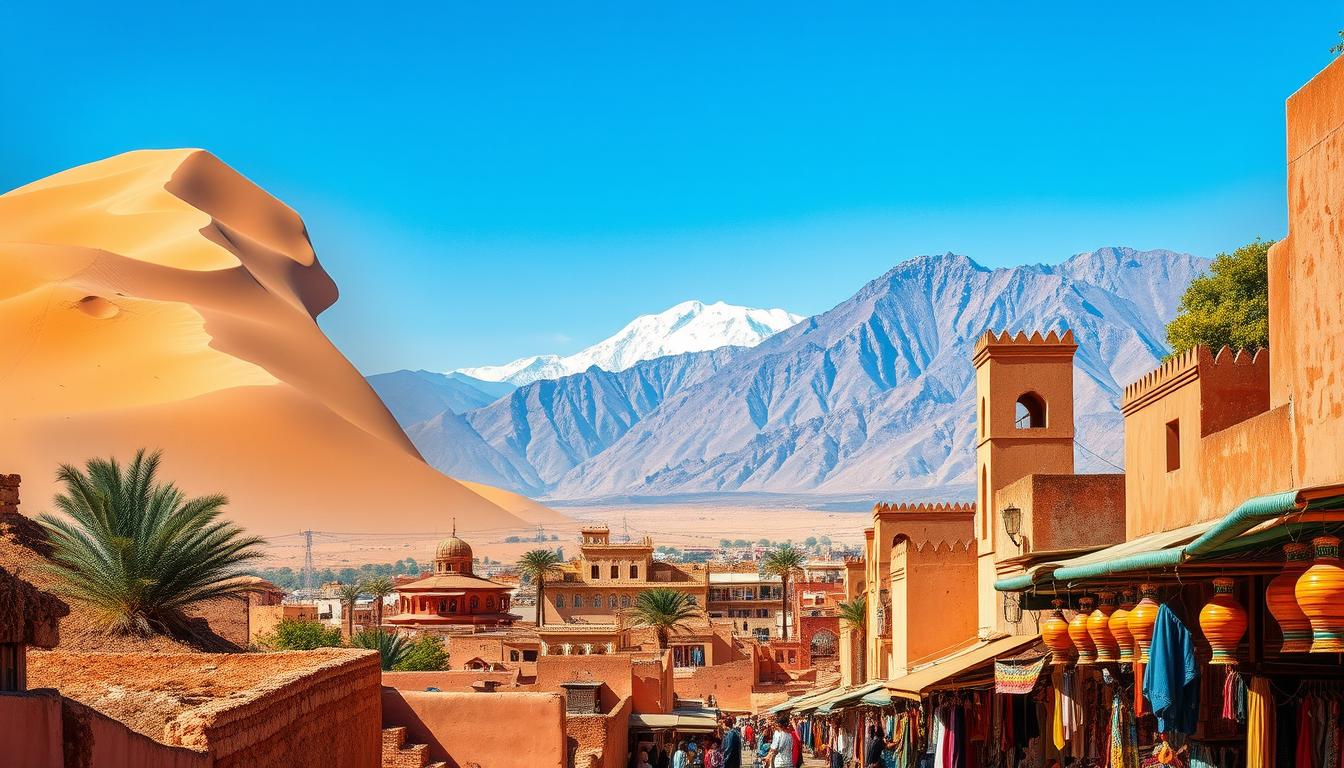Standing on the windswept coast of Casablanca, I discovered Morocco’s rainfall patterns. The rhythm of rain tells a story more complex than any guide. Your journey through Morocco’s climate will show a landscape shaped by water’s unpredictable dance.
Understanding rainfall by month in Morocco is key for travelers. From the Mediterranean to the Saharan desert, rainfall patterns create a diverse landscape. This diversity transforms the environment and affects local life.
Morocco’s location between the Atlantic and Mediterranean Sea creates complex weather. Each region has its own rainfall characteristics. This makes predicting the weather an art of careful observation and local knowledge.
Key Takeaways
- Morocco’s rainfall varies dramatically by region and season
- Coastal areas receive more precipitation than inland regions
- Winter and spring months typically have higher rainfall
- Mountain ranges significantly influence local precipitation patterns
- Climate zones range from Mediterranean to semi-arid environments
Understanding Morocco’s Rainfall Climate
Morocco’s climate is a mix of different landscapes and weather patterns. When planning your Morocco travel itinerary, knowing the seasonal weather is key for a great trip.
The climate data shows Morocco’s vast geography affects rain patterns. From the Mediterranean coast to mountains and deserts, each area has its own weather.
Diverse Climate Zones
Morocco has three main climate zones that shape rainfall:
- Coastal Mediterranean Zone: Mild winters and warm summers with moderate rainfall
- Atlas Mountain Region: Cooler temperatures with a lot of rain, more at higher elevations
- Saharan Desert Zone: Very dry with little rain all year
Seasonal Precipitation Variations
Weather changes a lot with the seasons. Coastal areas get more rain, while mountains and deserts have big differences. Winter brings more rain, mainly in the north and center.
“Morocco’s climate is a testament to nature’s incredible diversity, showing travelers a unique weather journey.” – Climate Research Institute
Knowing these weather patterns helps travelers plan better. It makes sure they have a comfortable and fun trip in this beautiful country.
Monthly Rainfall Breakdown
To understand Morocco’s rainfall, we must look at its different climates and weather records. The country’s varied geography greatly affects how much rain falls.
Rainfall in Morocco changes a lot from one area to another. This is because of the unique features of each region. The weather records show big differences between the coast, mountains, and deserts.
Average Rainfall by Month
| Month | Coastal Regions (mm) | Mountain Regions (mm) | Desert Regions (mm) |
|---|---|---|---|
| January | 85 | 120 | 15 |
| February | 75 | 110 | 10 |
| March | 65 | 90 | 5 |
| April | 50 | 70 | 3 |
| May-September | 10-25 | 5-15 | 0-2 |
Factors Influencing Monthly Variations
Several key factors affect Morocco’s rainfall:
- Elevation differences between coastal and mountain regions
- Proximity to the Atlantic Ocean and Mediterranean Sea
- Influence of the Atlas Mountains on weather patterns
- Seasonal wind currents
“Morocco’s rainfall is a testament to the remarkable geographical diversity of North Africa.” – Moroccan Climate Research Institute
Morocco’s rainfall varies greatly from wet coastal and mountain areas to very dry deserts. Knowing these patterns helps travelers and researchers plan for the weather.
January Rainfall in Morocco
Winter in Morocco brings a special kind of weather. The rain patterns are quite interesting. This makes January a great time for those who love weather and travel.
January is a wet month in Morocco, but not everywhere gets the same amount of rain. Places by the coast and in the mountains get more rain than the desert.
Temperature Trends
In January, Morocco’s temperatures are cool, ranging from 45°F to 60°F. The mountains, like the Atlas, can be even colder. They might even see snow at the top.
| Region | Average Temperature | Rainfall Probability |
|---|---|---|
| Coastal Areas | 50-55°F | High |
| Mountain Regions | 35-45°F | Moderate to High |
| Desert Regions | 45-55°F | Low |
Recommended Activities
- Explore indoor cultural attractions in cities like Marrakech
- Visit museums and historical sites
- Enjoy traditional Moroccan cuisine in cozy restaurants
- Take guided tours of ancient medinas
“January in Morocco offers a unique perspective on the country’s diverse landscapes and cultural richness.” – Moroccan Travel Experts
Be ready for changing weather by bringing layers and waterproof clothes. Even with rain, Morocco has lots of fun activities in January.
February Rainfall in Morocco
February is a time of change in Morocco’s weather. It shows how different parts of the country get rain. You’ll see how much rain falls in different places.
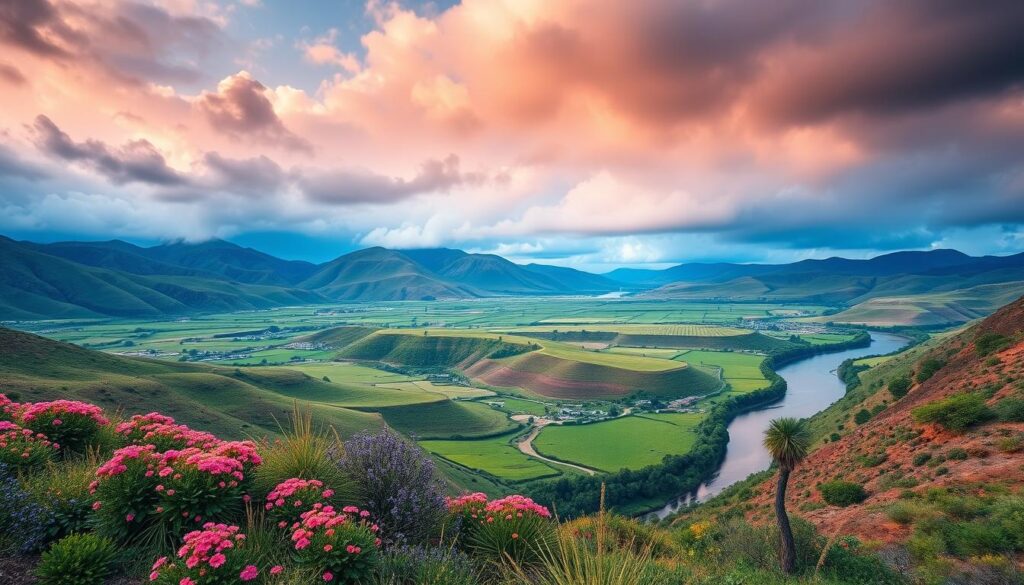
The dry seasons in Morocco start to change in February. Rainfall changes a lot between the coast and the dry lands. The coast gets more rain than the dry areas.
Temperature Trends
February temperatures in Morocco vary. They range from 50°F to 68°F, depending on where you are. The mountains are cooler, while the coast is milder.
- Coastal regions: Mild temperatures around 62°F
- Mountain zones: Cooler temperatures around 45°F
- Desert areas: Daytime temperatures near 70°F
Recommended Activities
February is a great time to see Morocco’s beauty, even with rain. Here are some fun things to do:
- Visit historic medinas in cities like Marrakech
- Explore indoor museums and cultural centers
- Take guided tours of traditional Moroccan crafts workshops
“February in Morocco reveals the subtle dance between winter’s retreat and spring’s anticipation.” – Moroccan Travel Insights
Knowing about the rain in different parts of Morocco helps you plan a great trip in February.
March Rainfall in Morocco
As winter turns to spring, Morocco sees a change in its weather. Knowing about the rainfall in Morocco in March helps travelers understand the country’s climate.
March is a key month for Morocco’s weather. Rainfall patterns start to change a lot. Different areas get different amounts of rain, making each place unique.
Temperature Trends
In March, Morocco’s temperatures range from 55°F to 70°F. Places by the coast, like Casablanca, are milder. Mountains stay cooler.
- Coastal regions: Mild temperatures around 65°F
- Mountain regions: Cooler temperatures around 50°F
- Desert areas: Warming up with daytime temperatures reaching 70°F
Recommended Activities
March is great for exploring Morocco outdoors. The rain makes the landscapes green and perfect for activities:
- Hiking in the Atlas Mountains
- Exploring coastal cities
- Visiting botanical gardens
- Experiencing traditional markets
Unique Events During March
March has special events that match the weather. Almond blossom festivals in places like Tafraoute show how rain and farming work together.
“March in Morocco is a symphony of changing landscapes and blooming possibilities” – Moroccan Travel Insights
Travelers should bring layers and waterproof clothes to enjoy Morocco’s March weather.
April Rainfall in Morocco
Spring in Morocco brings a change in weather, showing off the country’s varied climate. The rainfall in April is interesting, with different areas getting different amounts of rain.
April is a time of change in Morocco’s weather. Rainfall starts to go down from the winter months. Coastal and mountain areas get rain in their own special ways, affecting the local scenes.
Temperature Trends in April
In April, Morocco’s temperatures are nice and warm, ranging from 15°C to 22°C. This makes it a great time to explore. The weather varies by region:
- Coastal areas are mild
- Mountain regions are cooler
- Desert areas start to warm up
Recommended Activities
April is a great time for travelers looking for something special. You can:
- Check out coastal cities like Essaouira
- Go hiking in the Atlas Mountains
- Visit historic medinas with fewer people around
“April in Morocco is a traveler’s dream – unpredictable yet enchanting.”
Remember to pack rain gear and layers for your trip. April’s weather can change quickly, so be ready.
May Rainfall in Morocco
May marks a special time in Morocco as spring turns into early summer. This month shows off the country’s varied weather. Coastal and mountain areas have their own unique rain patterns, making the weather interesting.
Looking at Morocco’s weather records for May is really interesting. It helps you plan your trips and outdoor fun better.
Temperature Trends
In May, Morocco’s weather is pretty nice, with temperatures between 18°C and 27°C. Each area has its own weather:
- Coastal places like Casablanca stay cool
- Mountains are a bit chilly
- The desert in the south gets warmer
Recommended Activities
May is a great time to explore Morocco. The weather is just right for many activities:
- Check out Marrakech’s old medinas
- Go hiking in the Atlas Mountains
- See the beautiful coast in Essaouira
- Join in on outdoor markets and festivals
| Region | Avg Temperature (°C) | Rainfall (mm) |
|---|---|---|
| Coastal Region | 20-24 | 10-25 |
| Mountain Region | 15-20 | 30-50 |
| Desert Region | 25-30 | 5-10 |
Pro tip: Bring layers and a light rain jacket for Morocco’s May weather.
“May in Morocco offers a perfect blend of comfortable temperatures and diverse landscapes.” – Moroccan Travel Experts
June to August Rainfall Patterns
Summer in Morocco brings big changes in the weather. The sun shines brightly, making the land dry. This dry spell affects different parts of the country in unique ways.

The summer weather in Morocco is quite different. From June to August, the rain is scarce, mainly in coastal and southern areas.
Summer Weather Overview
Summer is very dry, with temperatures rising everywhere. Coastal places like Casablanca and Rabat are a bit cooler. But inland, it gets really hot.
- Coastal regions: Average temperatures between 70-85°F
- Interior desert zones: Temperatures reaching 100-110°F
- Mountain regions: Cooler temperatures around 60-75°F
Peak Tourist Activities
Summer is a great time to see Morocco’s beauty and culture. The dry, warm weather is perfect for many activities.
- Sahara Desert expeditions
- Coastal beach adventures
- Mountain hiking in Atlas Mountains
- Cultural festivals and events
| Region | Average Summer Temperature | Rainfall Probability |
|---|---|---|
| Coastal Areas | 75-85°F | Near Zero |
| Desert Regions | 95-110°F | Extremely Low |
| Mountain Zones | 60-75°F | Minimal |
“Summer in Morocco is a spectacular dance of sunlight and terrain, where each region tells a unique story of heat and resilience.” – Moroccan Travel Insights
Knowing about summer weather helps travelers have amazing experiences. It’s all about respecting Morocco’s natural beauty.
September Rainfall in Morocco
September is a key month in Morocco’s climate cycle. Summer fades into autumn, and rainfall patterns change across the country. Knowing the rainfall in Morocco by month is important for both travelers and locals during this time.
September brings small but important changes in Morocco’s rain. The north starts to see autumn rain, while the south stays dry. These changes make Morocco’s climate so interesting.
Temperature Trends in September
September temperatures in Morocco are usually mild to warm. This makes it great for exploring outside. Coastal cities like Casablanca and Rabat are cooler, while Marrakech in the interior is warmer.
- Coastal regions: 70-80°F (21-27°C)
- Inland areas: 80-90°F (27-32°C)
- Mountain zones: 60-70°F (15-21°C)
Recommended Activities
September is a great time to see Morocco’s varied landscapes. Here are some activities to try:
- Hiking in the Atlas Mountains
- Exploring coastal cities
- Visiting historical medinas
- Wine tasting in agricultural regions
“September in Morocco offers a perfect balance between summer’s energy and autumn’s tranquility.” – Moroccan Travel Experts
| Region | Average Rainfall | Temperature Range |
|---|---|---|
| Northern Coast | 20-40 mm | 68-75°F |
| Central Plains | 10-25 mm | 75-85°F |
| Southern Desert | 5-15 mm | 80-90°F |
Pro tip: Pack layers and a light waterproof jacket for your September trip to Morocco. This way, you’re ready for any rain.
October Rainfall in Morocco
As autumn comes, Morocco sees a change in its rain patterns. October is a special time, with weather that changes how people travel and see the country.
In October, Morocco’s rain changes in different ways. Coastal and mountain areas get more rain than the desert.
Temperature Trends in October
October in Morocco is quite nice, with temperatures between 65°F and 80°F. The weather is mild, making it great for seeing the country’s varied landscapes.
- Coastal regions experience moderate temperatures
- Mountain areas show cooler climate variations
- Desert regions maintain warmer daytime temperatures
Recommended Activities
Visiting Morocco in October is perfect for outdoor fun and cultural trips. The weather is nice, making it a great time for many activities.
- Hiking in Atlas Mountains – Enjoy crisp mountain air and stunning autumn landscapes
- Explore coastal cities like Essaouira with comfortable walking weather
- Visit traditional markets without extreme heat or rain disruptions
“October in Morocco is a traveler’s hidden gem, with perfect weather and rich culture.”
Remember to pack layers and waterproof gear for October. The rain is usually light, so you can enjoy your trip without worry.
November Rainfall in Morocco
As autumn turns to winter, Morocco’s climate changes. The weather starts to show more rain in November. This creates a special weather scene across the country’s different areas.
Looking at the morocco climate data for November shows interesting weather facts. These facts affect both travelers and locals. The amount of rain varies a lot based on where you are.
Temperature Trends
In November, Morocco’s temperatures are usually between 55°F and 70°F. This makes the weather mild and nice. Coastal places like Casablanca and Rabat have milder temperatures. But, areas further inland can have bigger temperature changes.
- Coastal areas: Mild temperatures around 65°F
- Mountain regions: Cooler temperatures, possible light snow
- Southern desert regions: Warm daytime temperatures
Recommended Activities
November is great for many fun activities in Morocco, even with some rain. You can check out lots of cool spots that fit the weather:
- Cultural Tours: See historic medinas in cities like Marrakech
- Hiking in Atlas Mountains
- Exploring indoor markets and museums
- Enjoying traditional Moroccan food in cozy restaurants
“November in Morocco is a season of subtle beauty, where landscapes transform and cultural experiences become more intimate.” – Moroccan Travel Insights
Bring layers, waterproof jackets, and comfy shoes. This way, you can enjoy Morocco’s weather in November fully.
December Rainfall in Morocco
Winter in Morocco brings its own weather patterns, changing the landscape. Knowing about December’s rainfall helps both travelers and scientists understand the country’s climate.
Morocco’s weather records show interesting rainfall facts in winter. December is a key month for rain, affecting both coastal and mountain areas.
Temperature Trends
December’s temperatures in Morocco vary a lot:
- Coastal areas stay mild, between 10-15°C
- Mountains can get very cold
- The desert in the south stays warm during the day
Recommended Activities
December is great for exploring, even with rain:
- Check out indoor cultural spots in Marrakech
- Visit museums when it’s raining
- Try Moroccan mint tea in cozy cafes
- Join winter festivals in the mountains
“December in Morocco is not just a month, but a tapestry of climatic experiences waiting to be discovered.” – Moroccan Climate Researcher
Traveling in Morocco during winter can be amazing. By knowing about the rain and temperature, you’re ready for a memorable trip.
Preparing for Rainy Days in Morocco
Traveling to Morocco in the wet seasons needs smart planning and the right gear. Knowing the country’s rainfall patterns helps you pack right. This way, you can enjoy your trip no matter the weather.
When packing, choose lightweight, quick-drying clothes that layer well. You’ll need water-resistant jackets, sturdy shoes, and a compact umbrella. Also, waterproof bags and covers for your electronics will protect them from rain.
Essential Packing Tips
Choose clothes made from moisture-wicking fabrics that dry fast. Pack a lightweight rain jacket, waterproof pants, and moisture-resistant shoes. Don’t forget thermal undergarments for cooler, rainy days. These tips will help you stay comfortable in Morocco’s varied climates.
Activities to Enjoy Despite the Rain
Rainy days in Morocco offer special experiences. Visit museums in cities like Marrakech, explore historical medinas, enjoy hammam spa treatments, or take cooking classes. Indoor markets, art galleries, and cultural centers are great alternatives during the wet seasons. With the right planning, rain can lead to exciting adventures.
FAQ
What is the rainiest month in Morocco?
November and December are the rainiest months in Morocco. The northern and coastal areas get the most rain. Places like Tangier, Rabat, and the Mediterranean coast see a lot of rain during these months.
How does rainfall vary across different regions of Morocco?
Rainfall varies a lot in Morocco. The northern coastal areas get the most rain, with 400-800mm annually. The Atlas Mountains get moderate rain and sometimes snow. The southern desert is very dry, with less than 100mm of rain a year.
Does Morocco have a distinct rainy season?
Yes, Morocco has a wet season from November to April. The most rain falls between December and February. Summer (June to August) is very dry, mainly in the interior and south.
How do the Atlas Mountains impact rainfall patterns?
The Atlas Mountains greatly affect Morocco’s rain. They block rain on the northern side, causing more rain there. The southern side gets less rain, creating a rain shadow effect. This shapes the country’s climate and rain patterns.
What should I pack for rainy weather in Morocco?
Pack a waterproof jacket, sturdy shoes, an umbrella, and layers for rainy visits. In coastal and northern areas, rain is common in winter. Waterproof gear helps stay dry while exploring.
Are there any benefits to visiting Morocco during the rainy season?
Visiting in the rainy season has many perks. You’ll see greener landscapes, fewer tourists, and lower costs. Waterfalls and rivers are at their best, and agricultural areas are lush and beautiful.
How does rainfall affect tourism in Morocco?
Rainfall doesn’t really affect tourism in Morocco. Winter might limit outdoor activities, but many places are indoors. Cities like Marrakech, Fez, and Casablanca have lots to see, rain or shine.
Can I visit the Sahara Desert during the rainy season?
The Sahara Desert is dry even in Morocco’s rainy season. Rain is rare, but the desert is always a great place to visit. Winter is cooler, making it a good time for desert tours.

